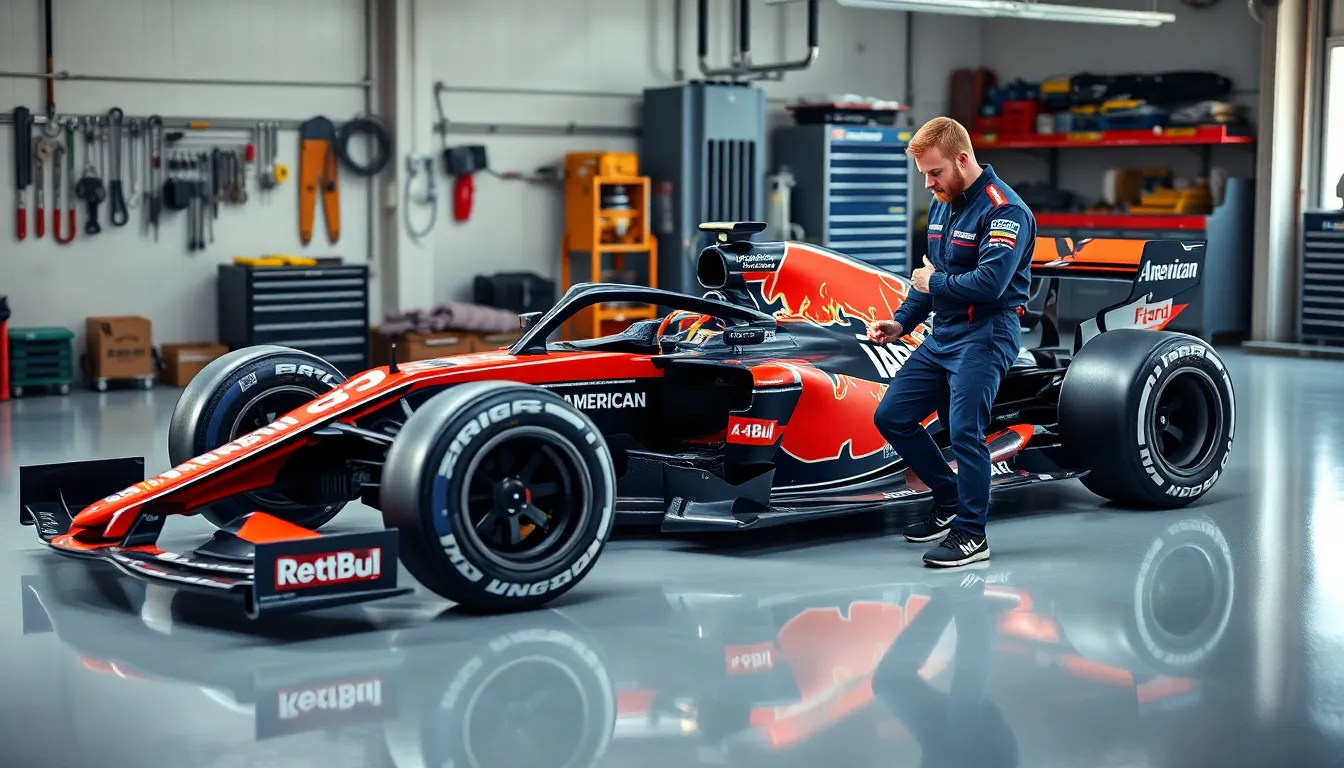When we watch Formula 1 races, we’re witnessing the pinnacle of automotive engineering in action. These aren’t just fast cars – they’re sophisticated machines that represent decades of technological innovation and millions of dollars in research and development. Each F1 car is a masterpiece of aerodynamics, precision engineering, and cutting-edge materials that push the boundaries of what’s physically possible.
We’ve all marveled at how these incredible vehicles can reach speeds exceeding 200 mph while handling tight corners with surgical precision. But there’s so much more beneath the surface that makes F1 cars truly extraordinary. From their carbon fiber monocoques to their hybrid power units, every component is designed for one purpose: maximum performance.
Understanding what makes these racing machines tick gives us a deeper appreciation for the sport we love. Let’s explore the intriguing area of Formula 1 cars and discover the technology that makes them the fastest racing vehicles on the planet.
History and Evolution of F1 Cars Through the Decades
The journey from those early racing machines to today’s technological marvels showcases how Formula 1 has continuously pushed automotive engineering boundaries. We’ve witnessed seven decades of remarkable transformation that’s redefined what’s possible in motorsport.
Early Years: 1950s-1960s Racing Machines
Front engined beasts dominated the first Formula 1 championship in 1950, with cars like the Alfa Romeo 158 producing around 350 horsepower from naturally aspirated engines. These pioneering F1 cars featured minimal aerodynamics, steel tube chassis, and drivers sitting directly behind massive engines that often leaked oil onto the track.
Weight penalties plagued these early machines, as the 1950s F1 cars typically weighed over 1,400 pounds without sophisticated materials like carbon fiber. Drivers wrestled with basic suspension systems and narrow tires that provided limited grip compared to today’s racing compounds.
Mid engine revolution began in the late 1950s when Cooper introduced rear mounted engines, fundamentally changing F1 car design forever. This innovation improved weight distribution and handling characteristics, leading teams like Ferrari and Lotus to adopt similar configurations by the early 1960s.
Open cockpit dangers remained a constant threat as drivers raced without helmets meeting modern safety standards, often wearing simple leather caps and goggles. We can barely imagine the courage required to pilot these machines at speeds exceeding 150 mph with minimal protection.
Revolutionary Changes in Aerodynamics and Safety
Ground effects technology transformed F1 cars in the 1970s when teams discovered how to create downforce using venturi tunnels beneath the chassis. The Lotus 78 and 79 generated massive amounts of grip through this innovation, allowing drivers to corner at previously impossible speeds.
Safety regulations evolved dramatically after tragic accidents prompted the FIA to mandate stronger chassis construction and improved driver protection systems. Roll bars became mandatory in 1972, while fire extinguisher systems and fuel cell protection significantly reduced fire risks.
Wing development accelerated throughout the 1960s and 1970s as teams experimented with front and rear spoilers to manage airflow. Early wings were often mounted high above the cars on spindly supports, creating spectacular but dangerous failures when they broke at speed.
Monocoque construction replaced traditional space frame chassis during this period, with manufacturers like McLaren pioneering aluminum honeycomb structures that were both lighter and stronger. These advances laid the groundwork for the carbon fiber revolution that would follow in the 1980s.
Modern Era Technological Advancements
Hybrid power units revolutionized F1 cars in 2014, combining turbocharged V6 engines with sophisticated energy recovery systems producing over 1,000 combined horsepower. These complex powertrains capture energy from exhaust heat and braking forces, demonstrating cutting edge efficiency technologies.
Active suspension systems briefly appeared in the early 1990s, with teams like Williams using computer controlled hydraulics to optimize car setup in real time. Although banned for being too advanced, these systems influenced modern road car development and showcased F1’s technological leadership.
Carbon fiber construction became standard throughout F1 car chassis and bodywork, creating incredibly strong yet lightweight structures that can withstand massive impact forces. Modern F1 cars weigh just 1,760 pounds including the driver, representing a 25% reduction from their 1980s predecessors.
Computational fluid dynamics now guides every aspect of aerodynamic development, with teams using supercomputers to analyze millions of data points before building physical components. Today’s F1 cars generate over 3,000 pounds of downforce at racing speeds, essentially pressing themselves into the track surface.
Data acquisition systems collect thousands of parameters per second from modern F1 cars, monitoring everything from tire temperatures to fuel flow rates with incredible precision. Engineers can analyze this telemetry data in real time, making strategic decisions that often determine race outcomes.
Engine Technology That Powers F1 Cars
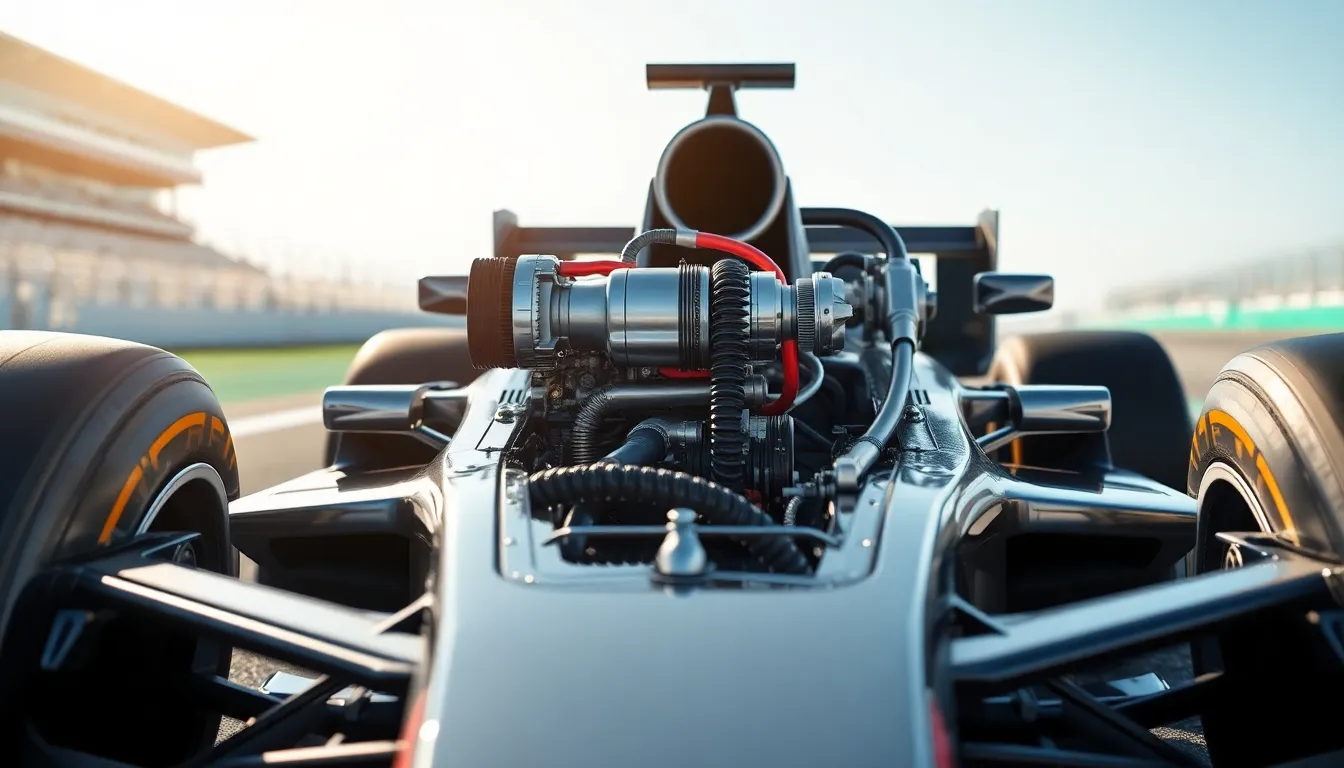
Modern Formula 1 cars showcase the pinnacle of automotive power unit development. We’re witnessing engines that combine raw performance with remarkable efficiency through cutting-edge hybrid technology.
Hybrid Power Units and Energy Recovery Systems
Hybrid power units revolutionized F1 racing when they debuted in 2014. These sophisticated systems consist of a 1.6-liter V6 turbo engine paired with two energy recovery systems: ERS-K (kinetic) and ERS-H (heat).
ERS-K captures energy from braking and stores it in lithium-ion batteries for later deployment. Drivers can access up to 160 horsepower for 33.3 seconds per lap from this system. ERS-H recovers energy from the turbocharger’s exhaust gases and provides unlimited deployment throughout each lap.
Together, these systems generate approximately 1000 horsepower while maintaining strict fuel flow limits. Teams strategically manage energy deployment to maximize performance during overtaking maneuvers and defensive driving situations.
Evolution From V12 to Current V6 Turbo Engines
V12 engines dominated Formula 1 from the 1960s through the mid-1990s, producing naturally aspirated power exceeding 700 horsepower. Ferrari’s iconic V12s and Honda’s legendary units defined an era of mechanical symphony and raw performance.
V10 engines replaced V12s in the late 1990s, offering better weight distribution and improved fuel efficiency. BMW, Mercedes, and Ferrari developed screaming V10s that reached 19,000 RPM and delivered over 900 horsepower by 2005.
V8 engines arrived in 2006 as part of cost-cutting measures, limited to 2.4 liters and 18,000 RPM. These naturally aspirated units produced around 750 horsepower while reducing development costs and improving reliability.
Current V6 turbo engines represent the sport’s commitment to road-relevant technology. Limited to 1.6 liters and 15,000 RPM, these units achieve thermal efficiency exceeding 50% through advanced combustion techniques and sophisticated turbocharging systems.
Fuel Efficiency and Performance Balance
Fuel flow restrictions force teams to maximize every drop of gasoline during races. Regulations limit fuel flow to 100 kilograms per hour, creating intense competition for optimal combustion efficiency.
Teams develop advanced injection strategies using multiple injection events per combustion cycle. These techniques optimize fuel atomization and reduce emissions while maintaining peak power output throughout the rev range.
Thermal management systems play crucial roles in maintaining performance consistency. Engineers design intricate cooling circuits for engines, turbochargers, and hybrid components to prevent power loss from excessive heat buildup.
Race strategy heavily influences fuel management decisions, with teams calculating optimal engine modes for different circuit sections. Drivers adjust power deployment based on tire degradation, traffic situations, and championship implications throughout each Grand Prix weekend.
Aerodynamic Design Features of Contemporary F1 Cars
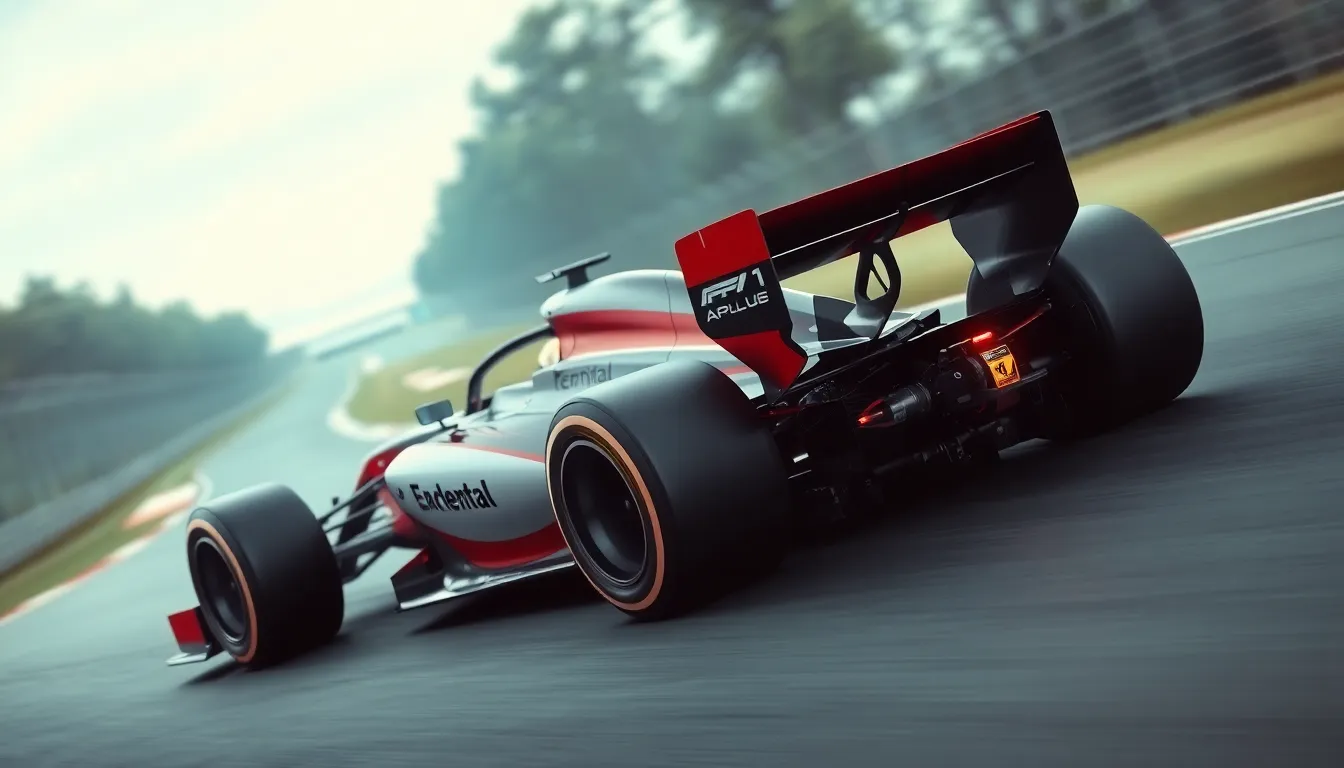
Modern F1 cars showcase aerodynamic sophistication that transforms air into a powerful ally for speed and control. We’ve witnessed these machines evolve into precision instruments where every surface contributes to their remarkable performance capabilities.
Front and Rear Wing Configurations
Front wings generate crucial downforce while managing airflow around the entire vehicle. These multi-element structures feature up to five separate wing elements that create different pressure zones and direct air toward key areas of the car. Teams adjust wing angles between 1-11 degrees to optimize downforce levels for exact track conditions like Monaco’s tight corners or Monza’s high-speed straights.
Rear wings provide the majority of a car’s downforce through their larger surface area and strategic positioning. Contemporary designs incorporate adjustable flap systems that can generate up to 1,500 pounds of downforce at 200 mph. Engineers position these wings in the clean airflow behind the cockpit to maximize efficiency while managing the balance between straight-line speed and cornering grip.
Wing endplates control airflow spillage and create beneficial vortices that enhance overall aerodynamic performance. These vertical surfaces prevent high-pressure air from flowing around wing tips and mixing with low-pressure air underneath. Modern endplates feature complex geometries with slots and turning vanes that generate controlled vortices to energize airflow over other car components.
Ground Effect and Underbody Aerodynamics
Ground effect technology returned to F1 in 2022 with venturi tunnels that create massive downforce through underbody airflow acceleration. These tunnels run along the car’s sides and accelerate air from approximately 100 mph to over 200 mph, creating low pressure that sucks the car toward the track surface. Current regulations allow teams to generate up to 60% of total downforce through ground effect compared to just 20% from previous flat-floor designs.
Underbody diffusers expand airflow at the car’s rear to maintain the low-pressure zone created by venturi tunnels. These carefully sculpted sections feature multiple vertical strakes that prevent airflow separation and maintain the pressure differential needed for consistent downforce. Teams can adjust diffuser rake angles between races to optimize performance for different track characteristics and weather conditions.
Floor edges and side seals prevent high-pressure air from entering the low-pressure underbody region. Contemporary designs use flexible stays and precise manufacturing tolerances to maintain consistent ride heights that preserve ground effect performance. These sealing systems must withstand forces exceeding 3,000 pounds while maintaining aerodynamic efficiency throughout tire degradation and fuel load changes.
DRS (Drag Reduction System) Implementation
DRS activation reduces rear wing drag by approximately 10-15% through automated flap adjustment during designated track zones. This system opens a slot in the rear wing’s upper element when drivers press a button, but only functions when cars are within one second of the vehicle ahead at exact detection points. Current regulations limit DRS usage to two or three zones per track, with each zone typically measuring 600-800 meters in length.
Electronic controls manage DRS deployment through sophisticated sensors that monitor car positioning and track conditions. The system automatically disables when drivers apply brakes or when wet weather conditions create unsafe racing scenarios. Race officials can manually override DRS activation during safety car periods or when track conditions deteriorate beyond predetermined thresholds.
Strategic DRS positioning creates overtaking opportunities while maintaining competitive balance throughout the field. Track designers and F1 officials collaborate to place DRS zones where natural overtaking proves difficult, such as before heavy braking zones or on long straights following tight corner sequences. Teams must balance DRS benefits with setup compromises, as cars optimized for DRS zones may sacrifice performance in other track sections.
Advanced Materials Used in F1 Car Construction

Formula 1 cars represent the pinnacle of materials science, utilizing cutting-edge composites and metals that push the boundaries of strength, weight, and safety. These advanced materials form the foundation of every F1 car’s exceptional performance capabilities.
Carbon Fiber Chassis and Components
Carbon fiber dominates F1 car construction as the primary material for chassis development and critical components. Teams construct monocoques entirely from carbon fiber composites, creating structures that weigh approximately 80 kilograms while withstanding forces exceeding 25G during crashes. Modern F1 cars use different carbon fiber weaves throughout their construction, with high-modulus fibers providing maximum stiffness in areas like the survival cell and medium-modulus variants offering flexibility in bodywork panels.
Manufacturers layer carbon fiber sheets using exact orientations to optimize strength characteristics for each component’s intended load path. Front and rear wings feature carbon fiber construction with wall thicknesses as thin as 2-3 millimeters, yet they generate downforce loads exceeding 800 kilograms at top speeds. Suspension components including wishbones, push rods, and anti-roll bars all use carbon fiber construction to minimize unsprung weight while maintaining structural integrity under extreme cornering forces.
Teams employ different carbon fiber grades ranging from standard modulus at 230 GPa to ultra-high modulus exceeding 400 GPa depending on component requirements. Brake ducts, floor panels, and aerodynamic devices all benefit from carbon fiber’s exceptional strength-to-weight ratio, allowing engineers to create complex geometries that would be impossible with traditional materials.
Titanium and Composite Material Applications
Titanium serves critical roles in F1 car construction where high-temperature resistance and corrosion protection are essential. Exhaust systems use titanium alloys like Ti-6Al-4V to withstand temperatures exceeding 1000°C while maintaining structural integrity and minimizing weight compared to steel alternatives. Suspension mounting points and gearbox components frequently incorporate titanium fasteners and brackets to reduce mass in areas where carbon fiber cannot provide adequate strength.
Teams integrate honeycomb aluminum cores between carbon fiber skins to create lightweight panels with exceptional rigidity and impact resistance. These composite sandwich structures appear in floor panels, sidepods, and non-critical bodywork where weight savings and manufacturing efficiency are priorities. Kevlar reinforcement layers provide additional puncture resistance in areas prone to debris impact, particularly around wheel wells and underbody sections.
Ceramic matrix composites appear in brake disc construction, offering superior heat dissipation compared to carbon-carbon alternatives while maintaining consistent performance throughout temperature cycles. Advanced composite materials like carbon-ceramic hybrids allow brake manufacturers to create discs weighing just 1.2 kilograms while withstanding temperatures exceeding 800°C during heavy braking sequences.
Weight Distribution and Safety Cell Design
Safety cell construction utilizes layered carbon fiber composite techniques to create survival zones capable of protecting drivers during high-speed impacts. Engineers design these structures using finite element analysis to distribute crash loads across multiple load paths, ensuring energy absorption while maintaining driver compartment integrity. The survival cell must pass FIA impact tests including 15-meter-per-second frontal impacts and 12-meter-per-second side impacts without compromising driver safety.
Weight distribution optimization requires strategic material placement throughout the chassis to achieve ideal 50/50 front-to-rear balance while meeting minimum weight requirements. Teams position dense components like the power unit and fuel cell to optimize center of gravity location, then use lightweight materials in peripheral areas to fine-tune overall balance characteristics. Ballast placement becomes critical when cars are underweight, with tungsten blocks strategically positioned to achieve optimal weight distribution.
Material thickness varies throughout the chassis based on structural requirements and safety regulations, with thicker sections around the driver’s head and torso area providing maximum protection. Teams must balance conflicting requirements of minimal weight against maximum safety, resulting in sophisticated material optimization strategies that use different carbon fiber grades and layup schedules throughout each chassis component.
Cutting-Edge Electronics and Data Systems in F1 Cars
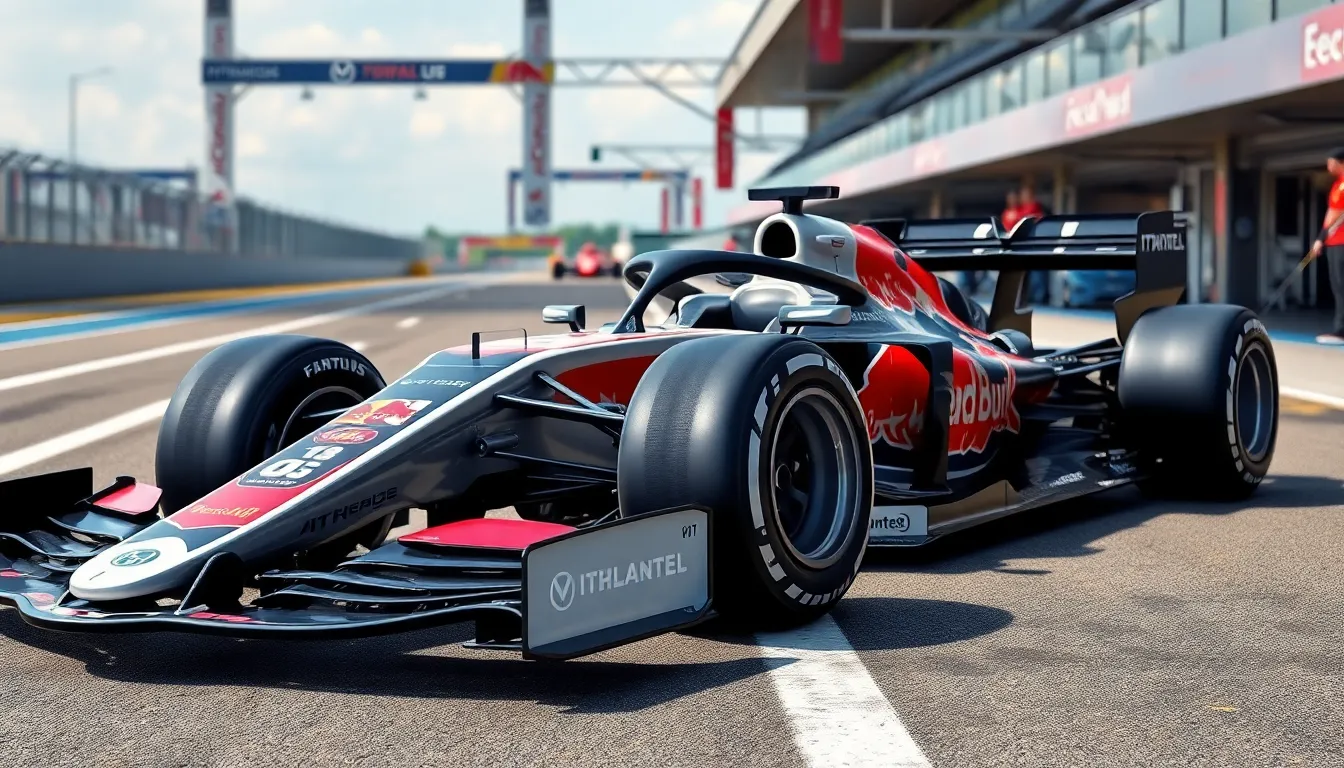
Modern F1 cars represent the pinnacle of automotive data technology, featuring sophisticated electronic systems that process millions of data points during every race. These advanced electronics work seamlessly with the aerodynamic and material innovations we’ve explored to create a complete technological package.
Telemetry and Real-Time Data Collection
Telemetry systems in Formula 1 cars transmit over 300 channels of data to pit crews at rates exceeding 100 samples per second. Engineers monitor engine temperatures, tire pressures, suspension loads, and aerodynamic forces through thousands of sensors strategically placed throughout each vehicle. GPS positioning systems track car location with millimeter precision while accelerometers measure forces in all three dimensions.
Data transmission occurs continuously through encrypted radio frequencies that connect cars to trackside receivers. Teams receive real-time information about brake temperatures reaching 1000°C, fuel consumption rates, and energy recovery system performance during every session. Pressure sensors monitor hydraulic systems while strain gauges detect chassis flex under extreme cornering loads.
Race strategists analyze live telemetry feeds to make split-second decisions about tire changes, fuel management, and race tactics. Teams can identify potential mechanical issues before they become critical failures by monitoring vibration patterns and temperature anomalies. Data historians capture every parameter for post-race analysis, creating massive databases that inform future car development and setup optimization.
Driver Display Systems and Controls
Modern F1 steering wheels contain over 25 buttons, switches, and rotary dials that control hundreds of car functions. Drivers adjust brake balance, differential settings, energy deployment modes, and fuel mixture ratios without taking their hands off the steering wheel. Carbon fiber construction keeps these complex control interfaces lightweight while maintaining durability under extreme conditions.
Digital displays provide critical information through customizable LED screens that remain visible at speeds exceeding 200 mph. Drivers monitor lap times, tire temperatures, fuel levels, and energy recovery status through high-contrast displays designed for bright sunlight conditions. Warning lights alert drivers to mechanical issues, track conditions, and strategic communications from their pit crews.
Paddle shifters enable lightning-fast gear changes through electronic actuators that complete shifts in under 50 milliseconds. Teams program custom button layouts for each driver’s preferences while maintaining standardized emergency functions for safety purposes. Radio controls allow instant communication with engineers while drivers navigate complex circuits at racing speeds.
ECU (Electronic Control Unit) Standardization
The FIA mandates that all F1 teams use identical McLaren Applied Technologies ECUs to ensure fair competition and cost control. This standardized brain controls engine mapping, energy recovery systems, and safety functions across all cars on the grid. Teams cannot modify the basic ECU hardware but can customize software parameters within strict regulatory limits.
Standardized electronic control systems prevent teams from gaining unfair advantages through proprietary electronic innovations. The spec ECU manages over 100 engine and chassis parameters while maintaining consistent data logging formats for regulatory scrutiny. FIA officials can access any car’s electronic data to verify compliance with technical regulations.
Software development focuses on optimizing engine maps, energy deployment strategies, and system integration within standardized constraints. Teams employ specialized engineers who develop custom algorithms for power delivery, traction control systems, and energy recovery optimization. Electronic standardization creates a level playing field while allowing strategic differentiation through software engineering expertise.
Tire Technology and Compound Strategies for F1 Cars
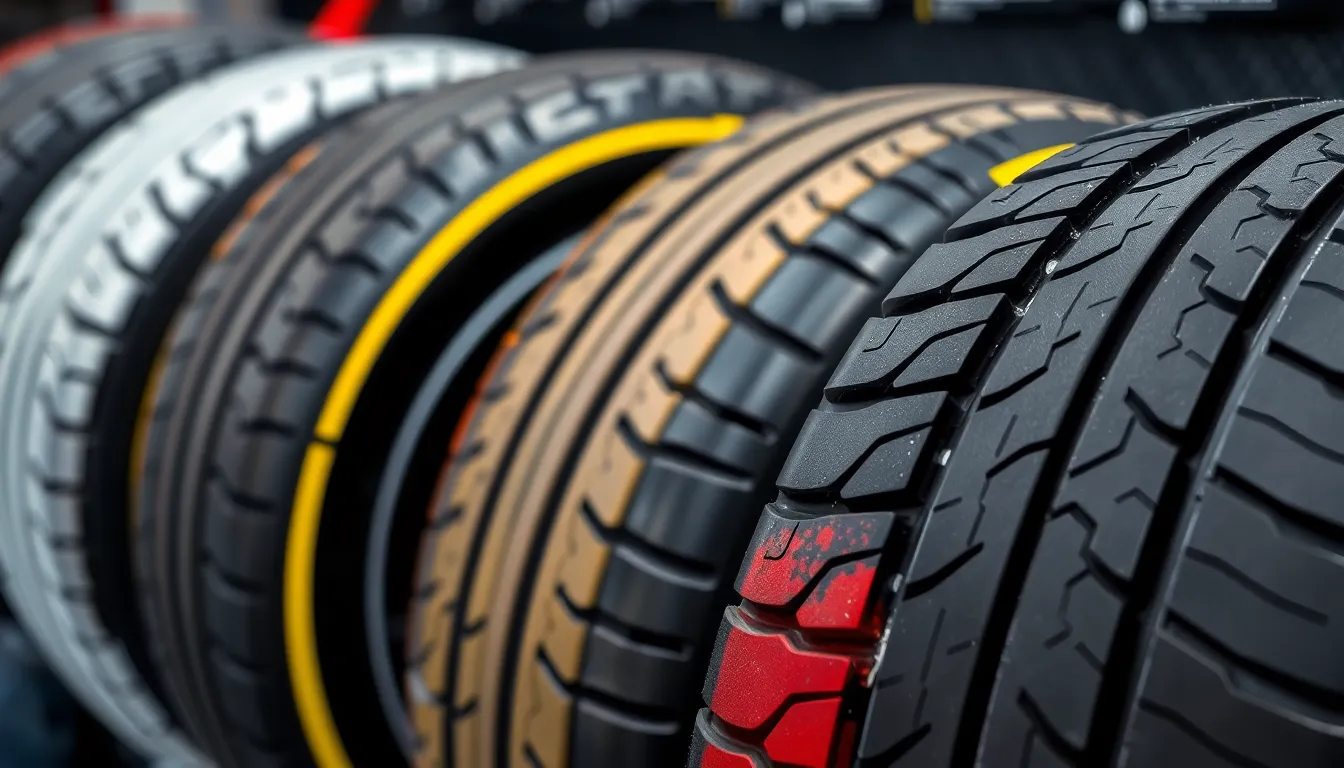
Tire technology stands as one of the most critical performance factors in modern Formula 1 racing. We’ll explore how teams maximize grip and durability through sophisticated compound strategies and precise temperature management.
Pirelli Tire Specifications and Compounds
Pirelli supplies F1 teams with five distinct dry weather compounds that we categorize by hardness and performance characteristics. Teams select from C1 through C5 compounds, with C1 being the hardest and C5 offering maximum grip but shortest lifespan. Each race weekend features three designated compounds that Pirelli labels as Hard (white sidewall), Medium (yellow sidewall), and Soft (red sidewall) for simplified identification.
Compound construction utilizes advanced synthetic materials including specialized carbon black and silica compounds that optimize grip levels across different temperature ranges. Teams analyze compound degradation rates through extensive testing, with softer compounds typically providing 1.5 to 2 seconds faster lap times but lasting only 15 to 20 laps compared to harder compounds that can endure 40 to 50 laps.
Wet weather compounds include Intermediate tires featuring 325 grooves that disperse approximately 30 liters of water per second at racing speeds. Full wet tires contain deeper grooves designed to handle standing water conditions, though they generate significantly more drag and reduce straight line speeds by 15 to 20 kilometers per hour.
Tire Temperature and Pressure Management
Temperature windows define optimal tire performance, with compounds requiring exact operating ranges between 80°C and 110°C for maximum grip generation. Teams monitor tire temperatures using infrared sensors and embedded thermocouples that provide real time data on surface and core temperatures across multiple tire zones.
Pressure management becomes crucial as tire pressures increase by approximately 0.2 to 0.4 bar during racing conditions due to heat buildup and centrifugal forces. Starting pressures typically range from 19.5 to 23.0 PSI depending on track conditions, ambient temperature, and compound selection, with teams making precise adjustments to maintain optimal contact patches.
Blanket heating systems warm tires to approximately 80°C before installation, ensuring compounds reach their operating windows quickly after the car exits the pit lane. Temperature distribution across tire surfaces affects grip balance, with teams using suspension adjustments and aerodynamic settings to manage heat generation in exact tire zones.
| Temperature Parameter | Optimal Range | Impact on Performance |
|---|---|---|
| Surface Temperature | 80°C – 110°C | Maximum grip levels |
| Core Temperature | 95°C – 105°C | Optimal tire structure |
| Starting Pressure | 19.5 – 23.0 PSI | Contact patch optimization |
| Racing Pressure | 21.0 – 24.5 PSI | Ever-changing load management |
Strategic Pit Stop Considerations
Pit stop strategy revolves around compound selection timing that balances performance gains against track position losses during tire changes. Teams calculate crossover points where newer, grippier compounds overcome the time penalty of pit stops, typically ranging from 20 to 25 seconds depending on circuit characteristics.
Undercut strategies involve pitting earlier than competitors to exploit fresh tire advantages, gaining approximately 0.5 to 1.2 seconds per lap during the initial stint on new compounds. Teams execute overcut strategies by extending current stints to benefit from lighter fuel loads and track position, though this approach risks tire degradation that can cost 2 to 4 seconds per lap in the final stint.
Multi compound strategies allow teams to optimize race pace across different phases, starting on medium compounds for tire preservation before switching to softer compounds for qualifying simulation runs or race ending pushes. Weather considerations force teams to adapt strategies instantly, with intermediate compound changes taking priority when track conditions shift between dry and wet surfaces.
Strategic timing considers traffic management, safety car periods, and competitor pit windows to maximize track position advantages. Teams analyze real time degradation data to determine optimal pit windows, balancing tire performance curves against fuel load reductions that naturally improve lap times by 0.3 seconds per 10 kilograms of consumed fuel.
Safety Innovations That Protect F1 Drivers
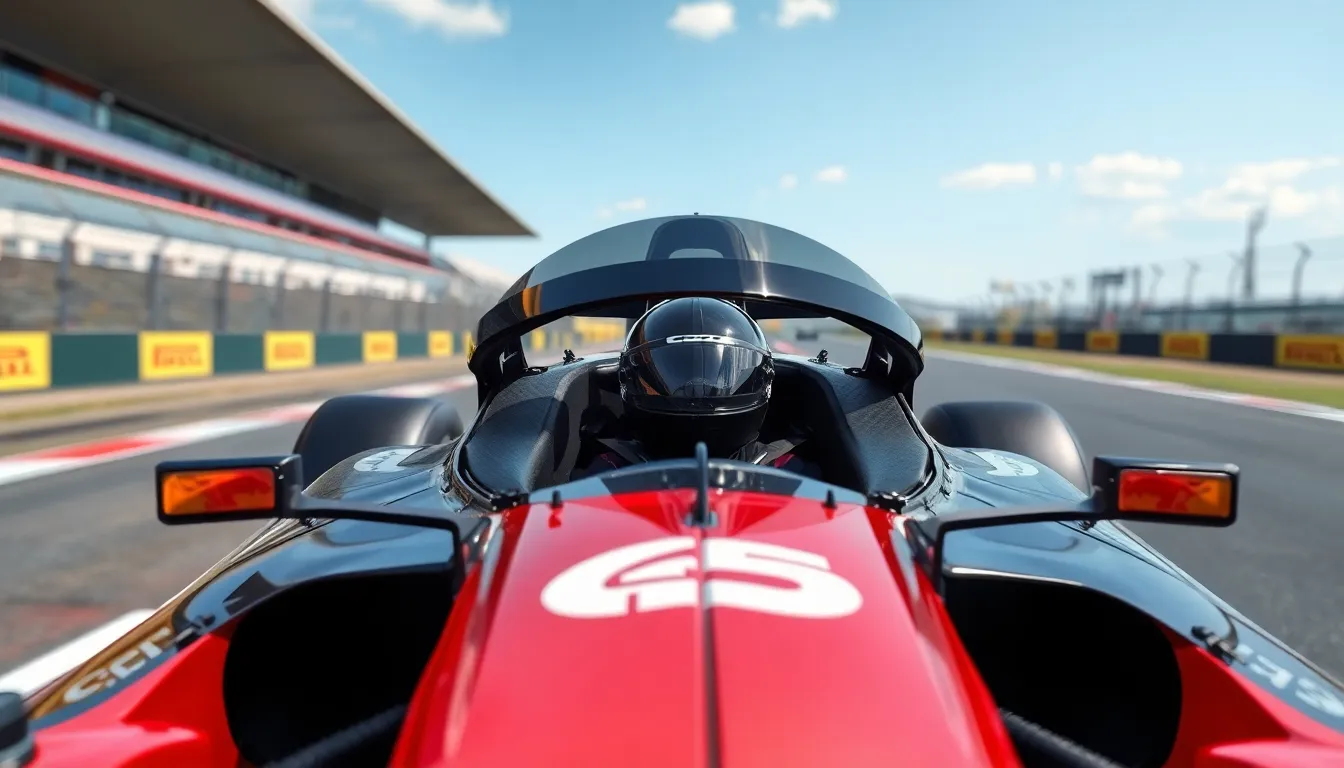
Modern Formula 1 cars incorporate revolutionary safety systems that transform racing from its historically dangerous past into today’s carefully protected environment. We’ve witnessed remarkable progress in driver protection technology that continues saving lives on track.
Halo Device and Cockpit Protection
Titanium construction makes the Halo device one of racing’s most important safety breakthroughs since its mandatory introduction in 2018. This protective structure weighs 7 kilograms and can withstand forces equivalent to the weight of a London double decker bus. Racing drivers initially expressed concerns about visibility and aesthetics, but the device has already prevented multiple serious injuries.
Carbon fiber cockpit sides work alongside the Halo to create a comprehensive protection zone around drivers’ heads and upper bodies. Teams design these barriers to deflect debris and absorb impact energy during collisions. Notable incidents like Romain Grosjean’s 2020 Bahrain crash demonstrated how the Halo system protects drivers from catastrophic accidents that would have proven fatal in previous eras.
Structural integration between the Halo and chassis ensures optimal load distribution during impacts. Engineers calculate stress points and reinforce connection areas to maintain structural integrity under extreme forces. Advanced testing protocols require each Halo unit to pass rigorous strength assessments before installation on race cars.
HANS Device and Impact Absorption
Head and Neck Support technology revolutionized driver safety by preventing basilar skull fractures during frontal impacts. The HANS device connects drivers’ helmets to their shoulders through carbon fiber tethers, limiting dangerous head movement during sudden deceleration. Medical research shows this system reduces head acceleration forces by up to 44% compared to traditional helmet restraints.
Energy absorption zones throughout F1 car structures work systematically to dissipate crash forces away from driver compartments. Nose cone deformation creates the first line of defense, designed to crumple and absorb kinetic energy before impacts reach the cockpit. Side impact structures use aluminum honeycomb cores that compress progressively, extending crash duration to reduce peak forces on drivers.
Seat design incorporates custom molded carbon fiber that distributes loads across drivers’ backs and shoulders during impacts. Teams create individual seat forms for each driver to optimize comfort and safety positioning. Racing harness systems use six point configurations with quick release mechanisms that allow rapid driver extraction while maintaining secure restraint during normal racing conditions.
Fire Safety Systems and Emergency Protocols
Onboard fire suppression systems automatically deploy AFFF foam within milliseconds of detecting temperature spikes or impact sensors. These systems protect both engine bay areas and cockpit zones through strategically placed nozzles. Drivers carry additional handheld extinguishers for emergency situations, with activation buttons positioned for easy access during crisis moments.
Nomex racing suits provide multiple layers of flame resistant protection, tested to withstand direct fire exposure for 12 seconds. Underwear, gloves, and shoes use similar fire resistant materials to create complete driver protection systems. Modern racing suits weigh approximately 1.5 kilograms while maintaining flexibility for precise car control.
Medical response teams position themselves at strategic track locations with specialized equipment for rapid driver extraction and treatment. Marshal training includes fire suppression techniques and driver rescue procedures exact to F1 car designs. Communication systems link track marshals directly to medical centers, enabling coordinated emergency responses within seconds of incidents occurring.
Cost and Regulations Governing Modern F1 Cars
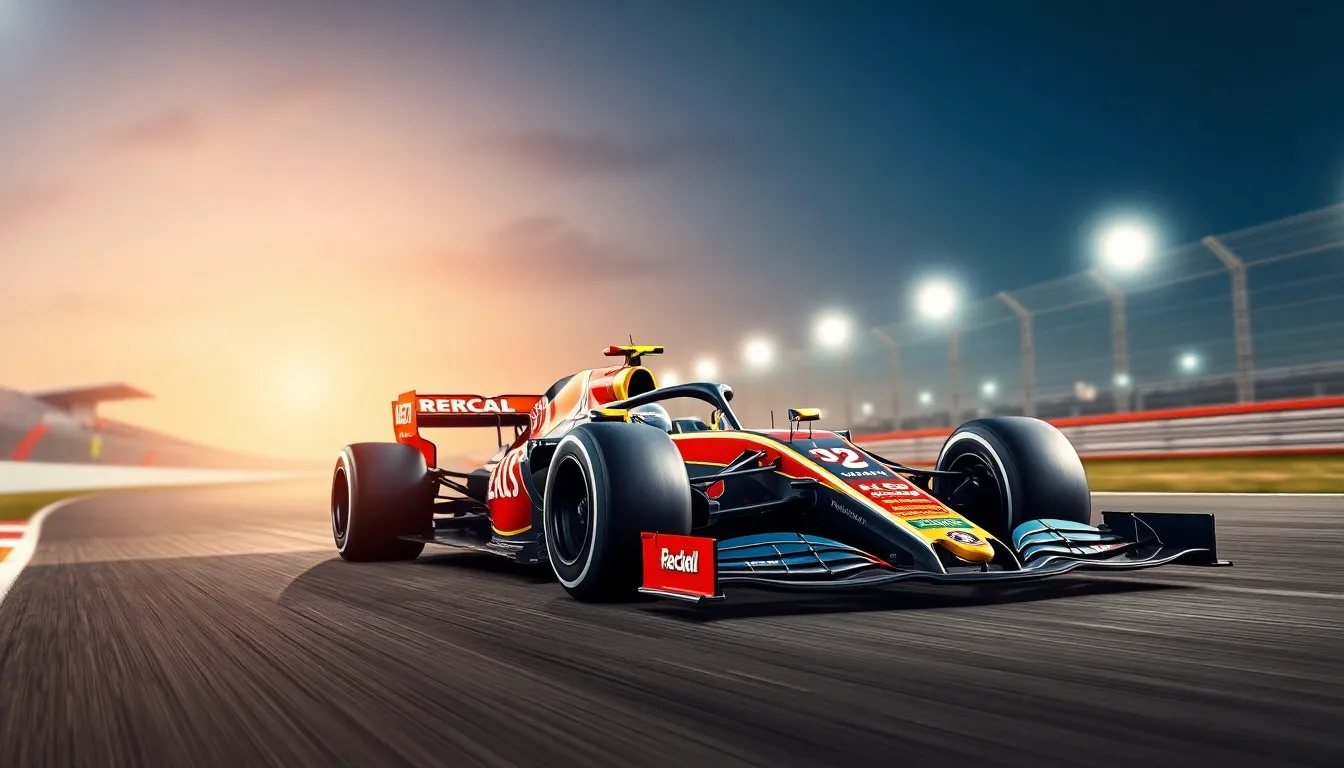
Financial oversight and technical compliance fundamentally shape how teams approach F1 car development and performance optimization. These regulatory frameworks ensure competitive balance while managing the astronomical costs of cutting edge automotive technology.
Budget Cap Implementation and Effects
Budget caps revolutionized F1 spending in 2021 when the FIA introduced a $145 million annual limit for team operations. Teams previously spent upwards of $400 million per season, creating massive competitive disparities between manufacturers like Mercedes and smaller outfits such as Williams or Haas.
Current regulations set the cap at $135 million for 2023 onward, excluding driver salaries, marketing costs, and heritage activities. Major manufacturers had to restructure their operations dramatically, with some laying off hundreds of engineering personnel to comply with the new financial restrictions.
Enforcement mechanisms include quarterly financial submissions and penalties ranging from reprimands to championship point deductions. Red Bull Racing faced scrutiny in 2022 for a minor procedural breach, demonstrating how seriously the FIA monitors compliance with these spending limits.
Smaller teams benefit significantly from this leveled playing field, as the budget differential between top and bottom constructors shrunk from 300% to approximately 50%. Alpine, McLaren, and Aston Martin gained competitive advantages as larger teams reduced their development scope to meet financial constraints.
Technical Regulations and Compliance
Technical regulations govern every aspect of F1 car design through the comprehensive FIA Formula One Technical Regulations document spanning over 100 pages. Dimensional limits restrict overall car length to 5,630mm and width to 2,000mm, while minimum weight requirements ensure safety and competitive parity.
Power unit specifications mandate 1.6 liter V6 turbocharged engines with hybrid energy recovery systems producing maximum 1000 horsepower combined. Fuel flow limitations cap consumption at 100kg per race and 110kg per hour maximum flow rate during competition.
Aerodynamic restrictions include standardized floor specifications and wing dimension limits to control downforce levels and promote closer racing. Ground effect regulations allow teams to generate downforce through underbody airflow while preventing excessive speeds that compromise safety.
Material restrictions prohibit certain exotic composites and metals to control costs and maintain safety standards. Carbon fiber specifications require exact layup techniques and impact resistance testing to ensure driver protection during high speed accidents.
Teams undergo rigorous scrutineering processes before each race weekend, where FIA officials inspect cars for regulation compliance. Violations result in penalties ranging from grid position drops to complete disqualification from championship standings.
Development Restrictions and Testing Limits
Development restrictions severely limit how teams can evolve their cars throughout the season and between championships. Wind tunnel testing allocates teams different amounts based on their previous championship position, with last place receiving 320 units annually while champions get only 200 units.
Computational Fluid Dynamics (CFD) testing follows similar sliding scale restrictions, giving lower performing teams 1,000 units compared to 800 units for championship winners. These aerodynamic development tools (ADT) regulations reset every six months based on current championship standings.
In season testing prohibits teams from running current specification cars outside of official race weekends and designated test sessions. Teams can conduct filming days with demonstration runs limited to 100km using promotional tires, but cannot gather performance data for car development.
Engine manufacturers face strict dyno testing limits and component allocation restrictions throughout the season. Power unit elements including internal combustion engines, turbochargers, and energy stores have exact usage limits that teams must manage strategically across 23 race weekends.
Parts development freezes affect major components like gearboxes and suspension elements once homologated for the season. Teams must submit detailed technical drawings and specifications to the FIA before implementing any modifications to ensure regulatory compliance.
Conclusion
Formula 1 cars represent the absolute pinnacle of automotive engineering where cutting-edge technology meets uncompromising performance. We’ve witnessed how these incredible machines have evolved from simple racing cars into sophisticated platforms that push the boundaries of what’s possible in motorsport.
Every component we’ve explored—from hybrid power units to advanced aerodynamics and revolutionary safety systems—demonstrates the relentless pursuit of perfection that defines F1. The sport continues to serve as a testing ground for innovations that eventually find their way into everyday vehicles.
The perfect balance between regulation and innovation ensures that F1 remains both competitive and technologically progressive. As we look toward the future these extraordinary machines will undoubtedly continue to inspire and amaze us with their blend of speed precision and engineering excellence.
Frequently Asked Questions
What makes Formula 1 cars so technologically advanced?
Formula 1 cars represent the pinnacle of automotive engineering, featuring sophisticated aerodynamics, precision engineering, and cutting-edge materials like carbon fiber. They combine turbocharged V6 engines with hybrid energy recovery systems, advanced telemetry processing millions of data points, and computational fluid dynamics for optimal performance. Every component is designed to push the boundaries of speed, efficiency, and safety.
How have F1 engines evolved over the decades?
F1 engines have transformed dramatically from the V12 powerplants of earlier eras to today’s highly efficient 1.6-liter V6 turbo engines. Modern power units, introduced in 2014, combine turbocharged engines with energy recovery systems (ERS-K and ERS-H) to generate approximately 1000 horsepower while adhering to strict fuel flow limits, emphasizing both performance and efficiency.
What role does aerodynamics play in F1 car performance?
Aerodynamics is crucial for F1 performance, with modern cars utilizing advanced wing configurations and ground effect technology to generate downforce and manage airflow. Front and rear wings create downforce for better cornering, while the return of ground effect allows cars to accelerate airflow under the chassis. The Drag Reduction System (DRS) strategically reduces drag to facilitate overtaking.
What materials are used to build F1 cars?
F1 cars primarily use carbon fiber for chassis construction, providing exceptional strength-to-weight ratios. Other advanced materials include titanium for high-temperature areas, honeycomb aluminum cores for structural components, and ceramic matrix composites. These materials are strategically layered and positioned to optimize weight distribution while creating protective survival zones for drivers during impacts.
How do F1 teams use data and electronics during races?
F1 cars feature sophisticated telemetry systems that transmit over 300 channels of data to pit crews in real-time, monitoring engine temperatures, tire pressures, and performance parameters. Standardized Electronic Control Units (ECUs) ensure fair competition, while advanced steering wheel displays provide drivers essential information. This data enables strategic decision-making and real-time performance optimization during races.
What tire compounds are available in Formula 1?
Pirelli supplies five tire compounds ranging from C1 (hardest) to C5 (softest), each offering different performance characteristics. Teams select compounds based on track conditions, race strategy, and weather. Advanced sensors monitor tire temperature and pressure, allowing teams to optimize performance and plan strategic pit stops, including undercut and overcut strategies.
What safety innovations protect F1 drivers?
Modern F1 features revolutionary safety systems including the titanium Halo device for head protection, HANS devices preventing head injuries, and energy absorption zones in car structures. Fire safety systems, comprehensive medical response protocols, and sophisticated survival cell designs using layered carbon fiber create protective zones that have transformed F1 from a historically dangerous sport.
How do budget caps affect F1 teams?
F1 introduced budget caps in 2021, currently set at $135 million annually (excluding certain costs), significantly reducing financial disparity between teams. This has led to major restructuring within organizations and leveled the competitive playing field. The caps limit team spending on car development, operations, and personnel, promoting more equitable competition.
What technical regulations govern F1 car design?
The FIA enforces comprehensive technical regulations covering dimensional limits, power unit specifications, aerodynamic restrictions, and safety requirements. Teams undergo rigorous scrutineering processes to ensure compliance, and development restrictions limit how cars can evolve throughout the season. These regulations balance performance innovation with competitive equity and safety standards.
How do hybrid power units work in modern F1?
Modern F1 hybrid power units combine a 1.6-liter V6 turbo engine with two energy recovery systems: ERS-K (kinetic energy from braking) and ERS-H (heat energy from exhaust). This combination generates approximately 1000 horsepower while maintaining strict fuel efficiency requirements, representing the perfect balance between raw power and environmental responsibility in motorsport.

